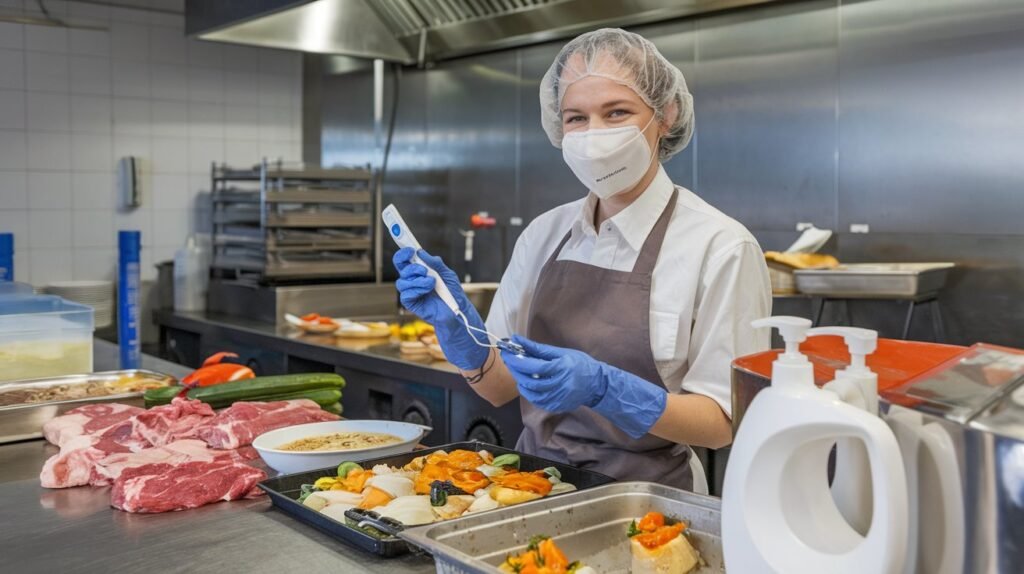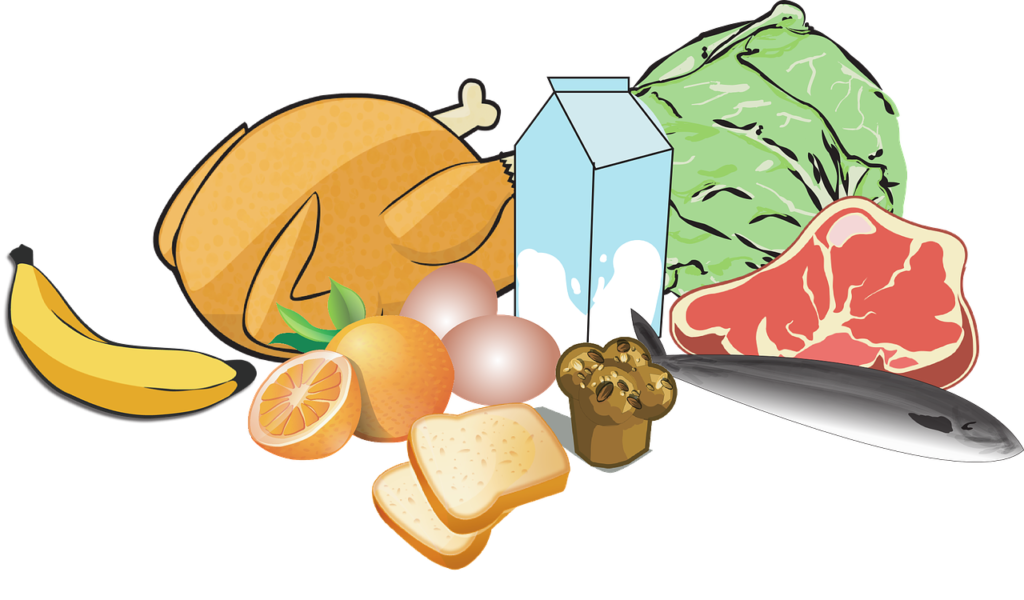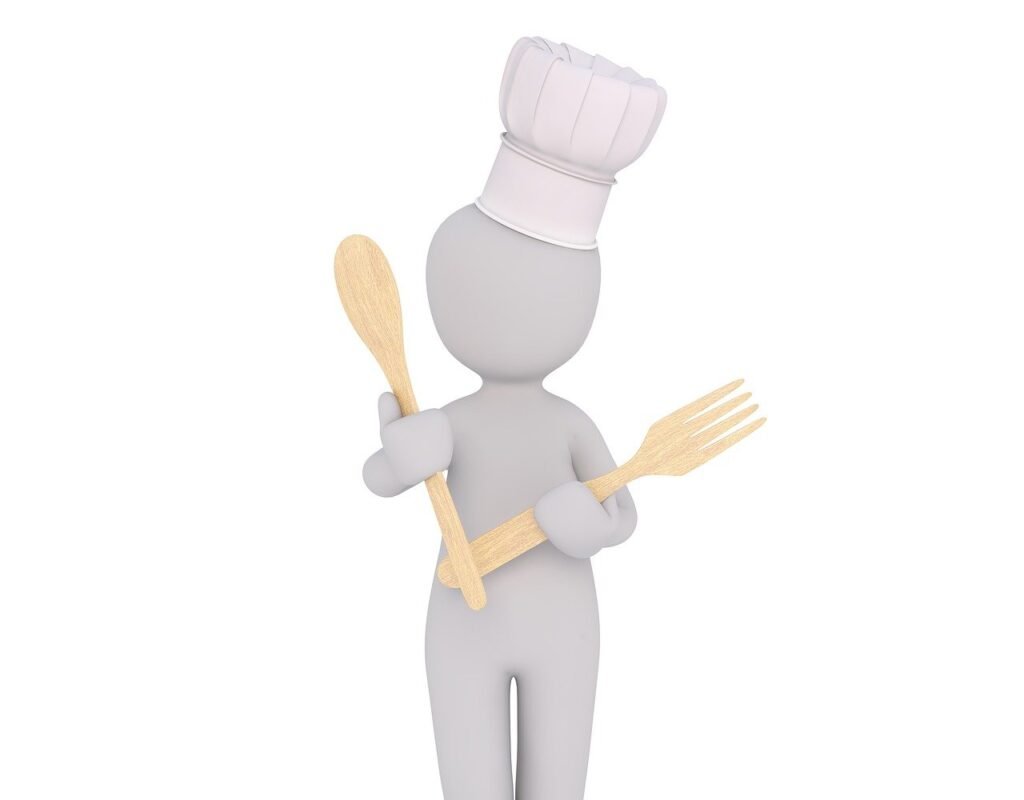In this guide, we will explore how can food handlers control the potential for cross contamination by following a set of practical, easy-to-implement steps that ensure safer food handling.
This post can be considered as the second episode after our previous one where we explained what cross contamination in food preparation is
This dangerous hazard that can happen during any stage of our food preparation process as explained.
Now it is time to ensure that we can avoid cross-contamination using very easy and applicable practices.
Practices Food Handlers Can Follow to Prevent Cross Contamination
A food handler is anyone who directly touches food or food surfaces while preparing, serving, or storing food.
This can include chefs, kitchen staff, servers, and even people who work in food packaging.
However, food handlers aren’t limited to those working in the food industry.
If you regularly prepare meals at home for your family, or help in community kitchens, you’re also considered a food handler.
So, the following factors play a crucial role in preventing foodborne illnesses and cross-contamination potential:
1. Training and Education
How can we deal with a hidden enemy?
It is impossible to control a hazard that we cannot see. this is the danger of bacteria and microorganisms that cause foodborne illnesses.
The first weapon we have to be equipped with is the awareness.
Food handlers need to be aware of their enemy and it’s weak points to be able to beat it.
Education and awareness ensure food handlers understand the risks of cross contamination and the steps needed to avoid it.
Without proper knowledge, even small mistakes—like improper handwashing or using the same cutting board for raw and cooked food—can lead to serious health risks.
There are many ways food handlers can improve their knowledge about cross contamination and how to avoid it.
Regular Food Safety Training Courses will for sure improve their skills and elevate their ability to deal with foods in safer way.
One of the most effective ways is to learn from previous incidents related to their industry.
Every single day, foodborne illnesses cause unpleasant symptoms for lots of people allover the world.
These cases are recorded and investigated to uncover the hidden causes.
Food handlers should be aware of these cases and how they happened to avoid repeating them.
For example, we created a post describing what happened in Michigan this year due to the Listeria outbreak.
After that, we created another post describing how to avoid Listeria infection in simple steps.
2. Correct Food Storage Practices
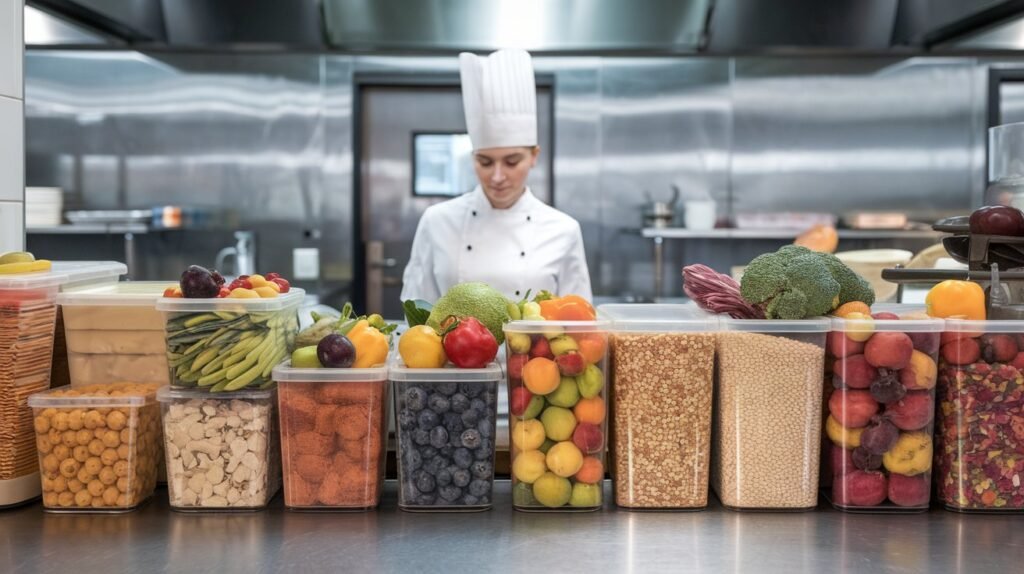
Food storage is one of the most crucial steps where cross- contamination can occur.
Food handlers need to be aware of how to store foods in a safe way.
This can be achieved by separating raw food from ready-to-use foods, learning how to use FIFO method in food storage and knowing about the food storage hierarchy.
This post will tell you which storage practices could cause cross contamination
3. Temperature Control
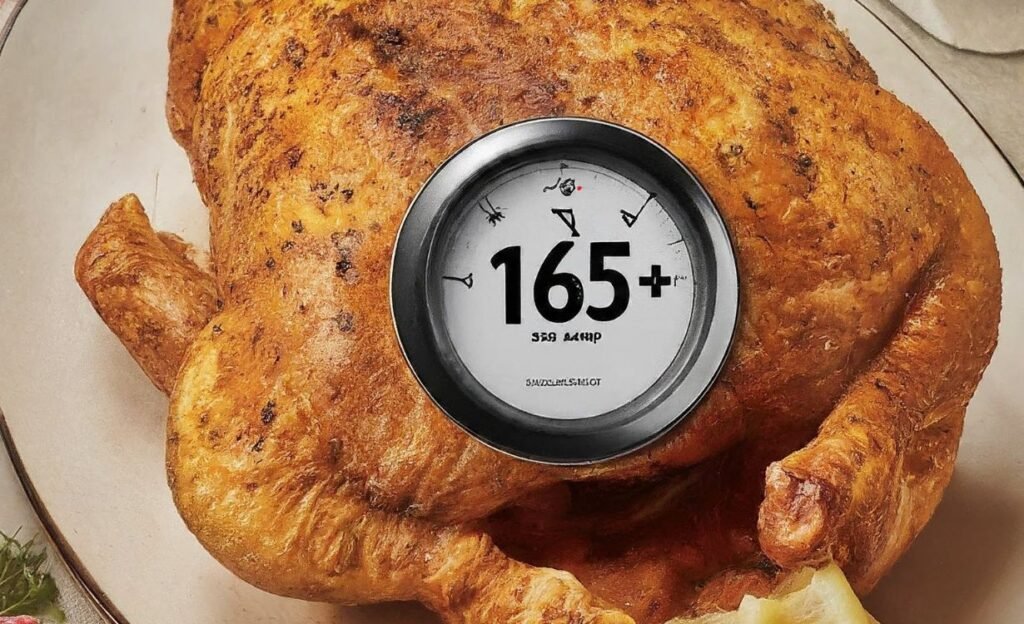
Food handlers must always Keep foods at safe temperatures.
And this is one of the most critical branches that food handlers need to be aware of.
They must know what is the temperature danger zone (TDZ) and how to avoid it.
Also, food handlers should know how to deal with some foods that need special care like TCS foods.
Those foods need temperature and time control systems because of their moisture content and other specific characteristics.
4. Safe Waste Disposal
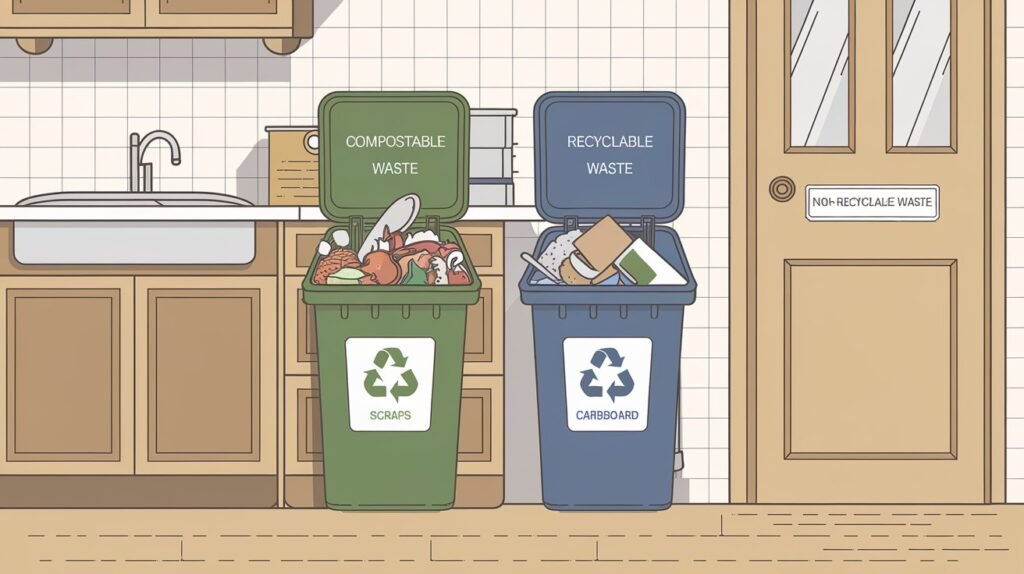
Food waste is a dangerous source of cross-contamination, as it can attract pests and spread harmful bacteria.
But how can food handlers control the potential for cross contamination through waste disposal?
By safely managing waste disposal and ensuring it stays away from food preparation areas.
In many countries, food authorities require food business owners to implement waste management programs.
Practices like: using separate bins for waste, removing trash regularly, and keeping waste away from clean surfaces help food handlers effectively control the potential for cross-contamination .
5. Pest Control
Pests like rodents and insects can spread harmful bacteria and pathogens by carrying them into your kitchen.
This can lead to cross-contamination and lowering food safety standards in both home and business kitchens.
In this post, you can learn why pests are a great food safety hazard.
Here are some tips to keep your food safe and away from harmful pests:
Sealed Containers: Store food in airtight containers to prevent pest access.
Regular Cleaning: Keep all kitchen surfaces and floors clean from food scraps.
Pest Traps: Use traps to monitor and control pest populations.
Proper Waste Disposal: Dispose of waste frequently and keep bins tightly sealed.
Routine Inspections: Regularly inspect the kitchen for signs of pests and take immediate action.
Pest control programs: This is essential for food business owners.
It can be done by hiring a specialized company that can monitor, track and control pests in a safe eco-friendly way.
6. Personal Hygiene

Personal hygiene is essential in controlling foodborne illnesses.
Here is how can food handlers control the potential for cross contamination by following proper hygiene practices.
Frequent Handwashing: Wash hands with soap and water for at least 20 seconds before and after handling food.
Here you can learn and teach your children the correct order of steps for handwashing
Use of PPE: Always wear gloves, and hairnets when handling foods, and change them regularly.
Avoid Touching Your Nose: Refrain from touching your nose or hair while handling food to prevent contamination.
Cover Sneezes and Coughs: Always sneeze or cough into your elbow or a tissue, and wash your hands immediately to avoid spreading germs.
Conclusion:
Controlling cross contamination is vital for ensuring food safety, whether in home kitchens or professional food businesses.
How can food handlers control the potential for cross contamination?
It starts with awareness and implementing key practices.
Training and education provide the foundation, equipping food handlers with the knowledge to follow safety protocols.
Proper food storage and temperature control are essential to keeping bacteria at bay, while waste disposal and pest control help maintain a clean environment.
Personal hygiene also plays a crucial role.
Simple actions like regular handwashing, wearing clean PPE, avoiding touching your nose, and covering sneezes can make a significant difference in preventing foodborne illnesses.
Following these practices not only protects the public but also supports the food business in meeting health regulations and maintaining a good reputation.

